WRITTEN BY: CAROLINE REEKIE
As we move into 2025, direct-to-consumer (DTC) marketers face a rapidly evolving landscape. With increased competition, stricter privacy regulations, and changing consumer demands, traditional marketing strategies are being put to the test. One of the most significant shifts is the move from the conventional marketing funnel to the hourglass model, redefining how brands interact with their customers.
Key Challenges for DTC Marketers in 2025
- Market Saturation: The DTC space is becoming increasingly crowded, with many product categories reaching saturation. This heightened competition requires brands to differentiate themselves more effectively.
- Privacy Regulations: Evolving privacy laws challenge targeted advertising and data collection practices, necessitating new strategies to reach consumers while respecting their privacy.
- Sustainability Concerns: Consumers are demanding sustainable and ethically sourced products. Brands must integrate these values into their supply chains and messaging, which adds complexity.
- Consumer Trust Issues: Post-pandemic, trust in digital transactions has been eroded by scams and misinformation. Rebuilding consumer trust is paramount.
- Balancing Personalization and Privacy: While personalization remains key, it must be balanced with growing privacy concerns, especially with advancements in AI and machine learning.
- Rising Advertising Costs: The increasing cost of digital advertising pressures margins, particularly for smaller DTC brands.
- Competition from Established Brands: Larger companies are investing heavily in DTC capabilities, posing a significant threat to smaller players.
The Hourglass Model vs. Traditional Funnel
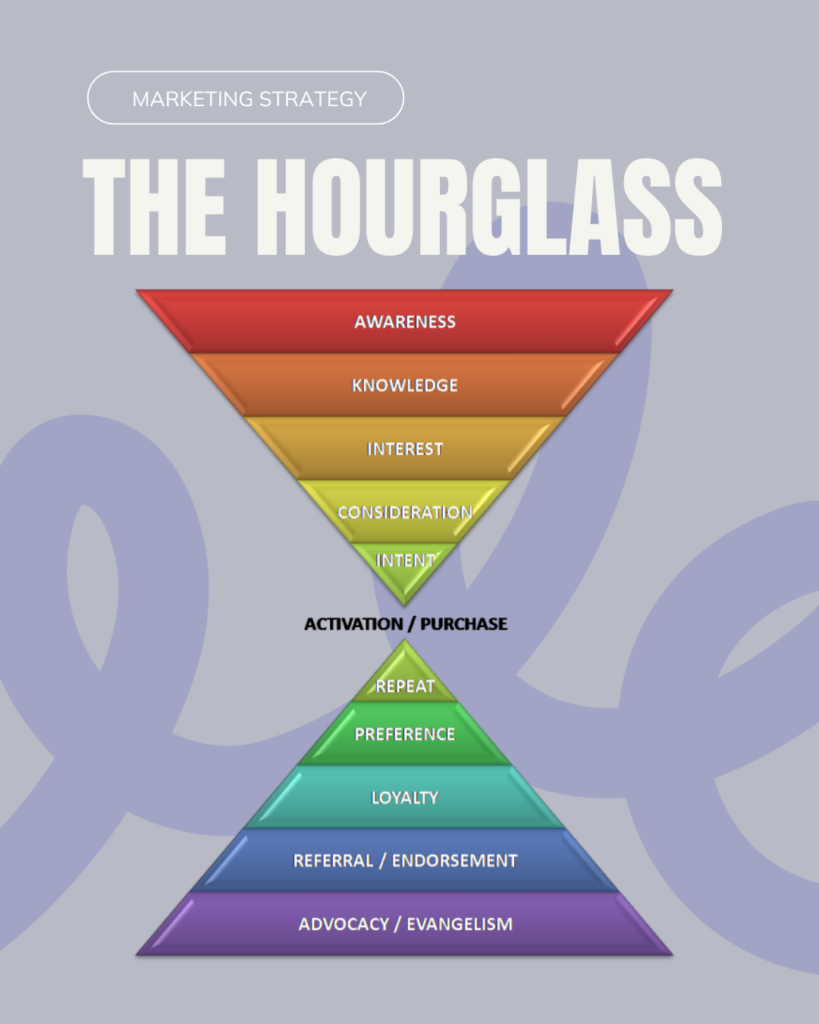
1. Post-Purchase Experience Focus
The hourglass model shifts focus to the post-purchase experience. Unlike the traditional funnel that ends at conversion, the hourglass extends to include customer interactions after the sale. This shift aims to delight customers, transforming them into brand advocates.
2. Customer-Centric Approach
In the hourglass model, understanding and catering to customer needs at every stage of their journey is paramount. It fosters long-term relationships by ensuring customers feel valued and heard from initial awareness to post-purchase support.
3. Moments of Truth
Every interaction is a “moment of truth” that influences brand perception and loyalty. Ensuring excellence at each touchpoint drives repeat purchases and referrals.
4. Cyclical Process
Unlike the linear traditional funnel, the hourglass is cyclical. Satisfied customers re-enter the cycle at various stages, becoming repeat buyers and advocates, reinforcing the brand’s growth loop.
5. Technology and Data Integration
Leveraging technology and data allows for personalized experiences and streamlined communication. This ensures customers feel understood throughout their entire brand experience.
The Hourglass Model
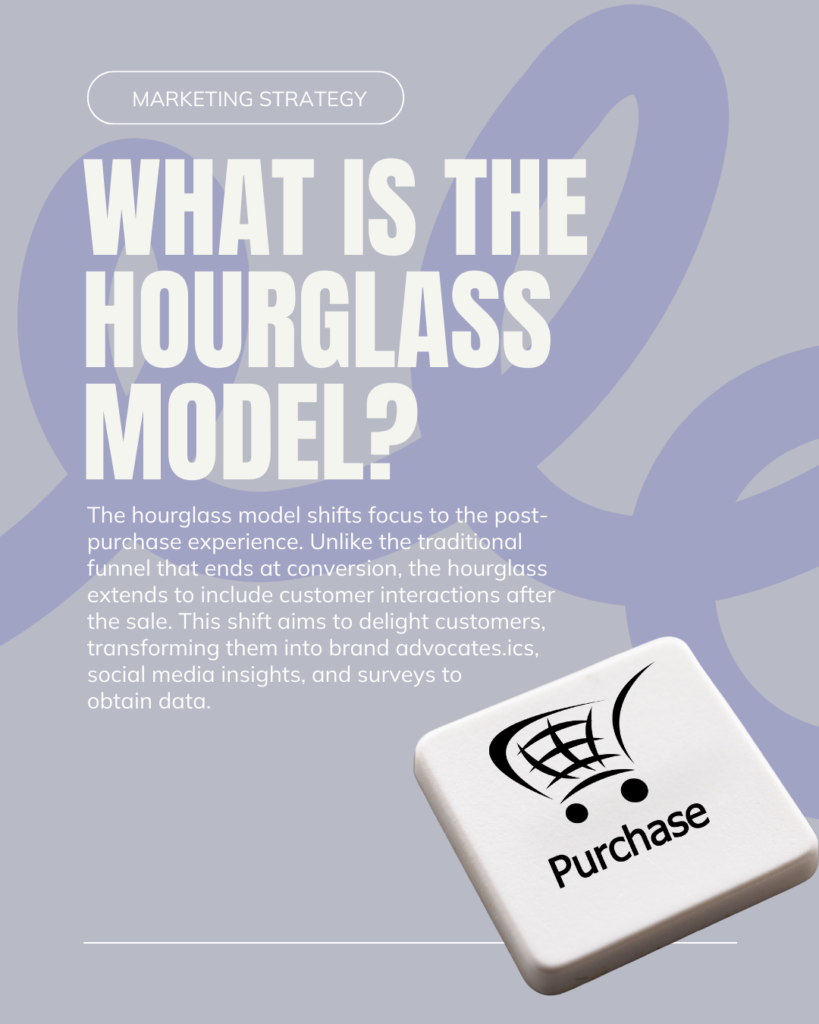
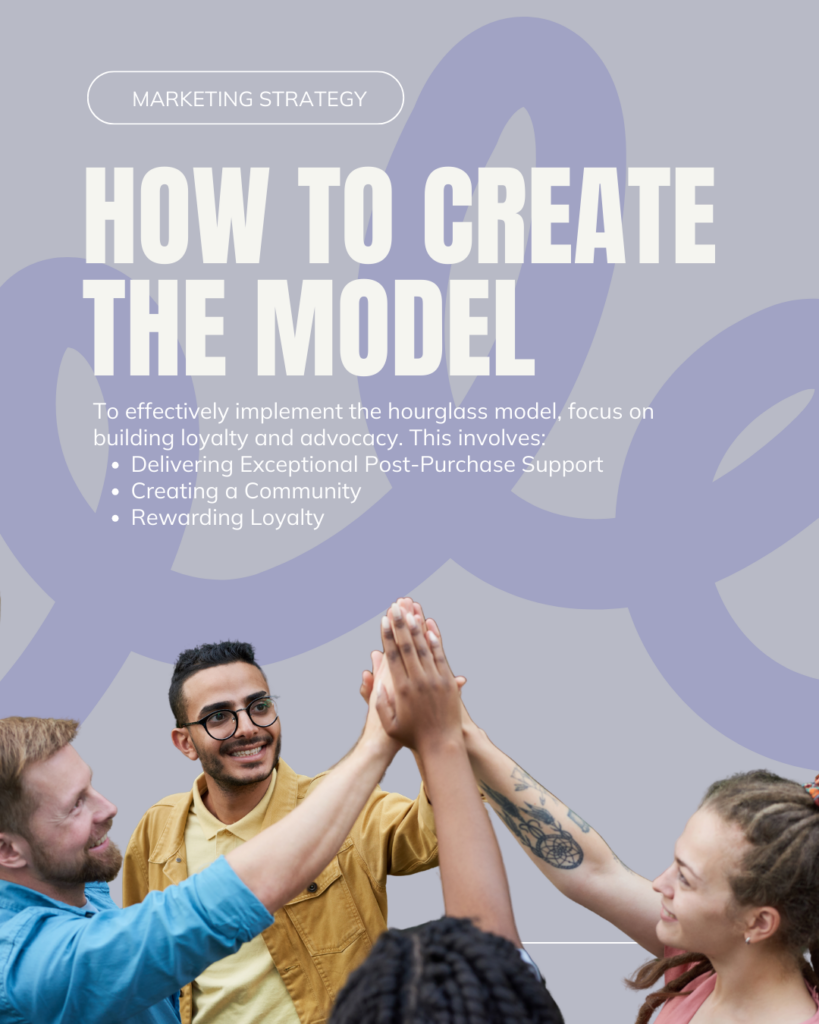
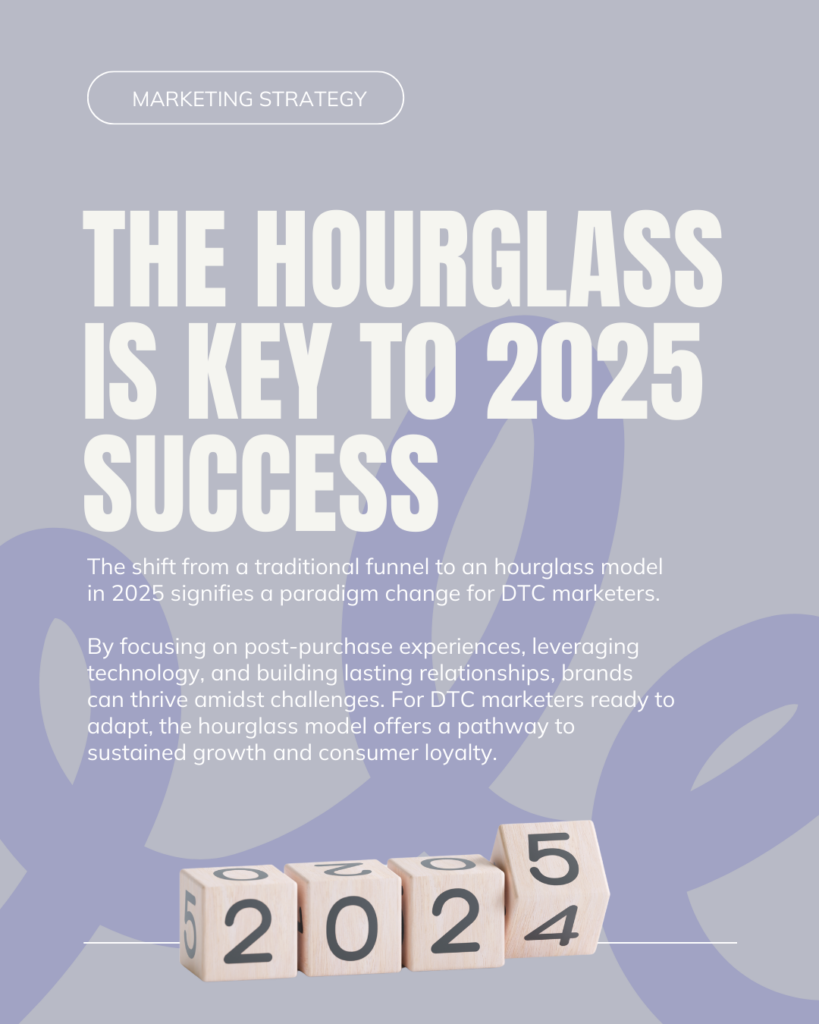
Implementing the Hourglass Model
Building Loyalty and Advocacy
To effectively implement the hourglass model, focus on building loyalty and advocacy. This involves:
- Delivering Exceptional Post-Purchase Support: Offer seamless support to address any issues promptly.
- Creating a Community: Engage customers in a community that shares brand values and encourages advocacy.
- Rewarding Loyalty: Implement loyalty programs or exclusive offers for repeat customers.
Leveraging Technology
Use technology to enhance customer experiences:
- Utilize CRM Systems: Track customer interactions to personalize future engagements.
- AI-Driven Insights: Use AI to analyze customer data and improve personalization.
- Automated Communication: Streamline post-purchase communication with automated messages to maintain engagement.
Focus on Sustainability and Transparency
Aligning with consumer values around sustainability and transparency will also be crucial. Clearly communicate your efforts in these areas to build trust and loyalty.
Conclusion
The shift from a traditional funnel to an hourglass model in 2025 signifies a paradigm change for DTC marketers. By focusing on post-purchase experiences, leveraging technology, and building lasting relationships, brands can thrive amidst challenges. For DTC marketers ready to adapt, the hourglass model offers a pathway to sustained growth and consumer loyalty.
To explore how your business can effectively transition to this model, consider connecting with industry experts or attending workshops that focus on innovative DTC strategies.
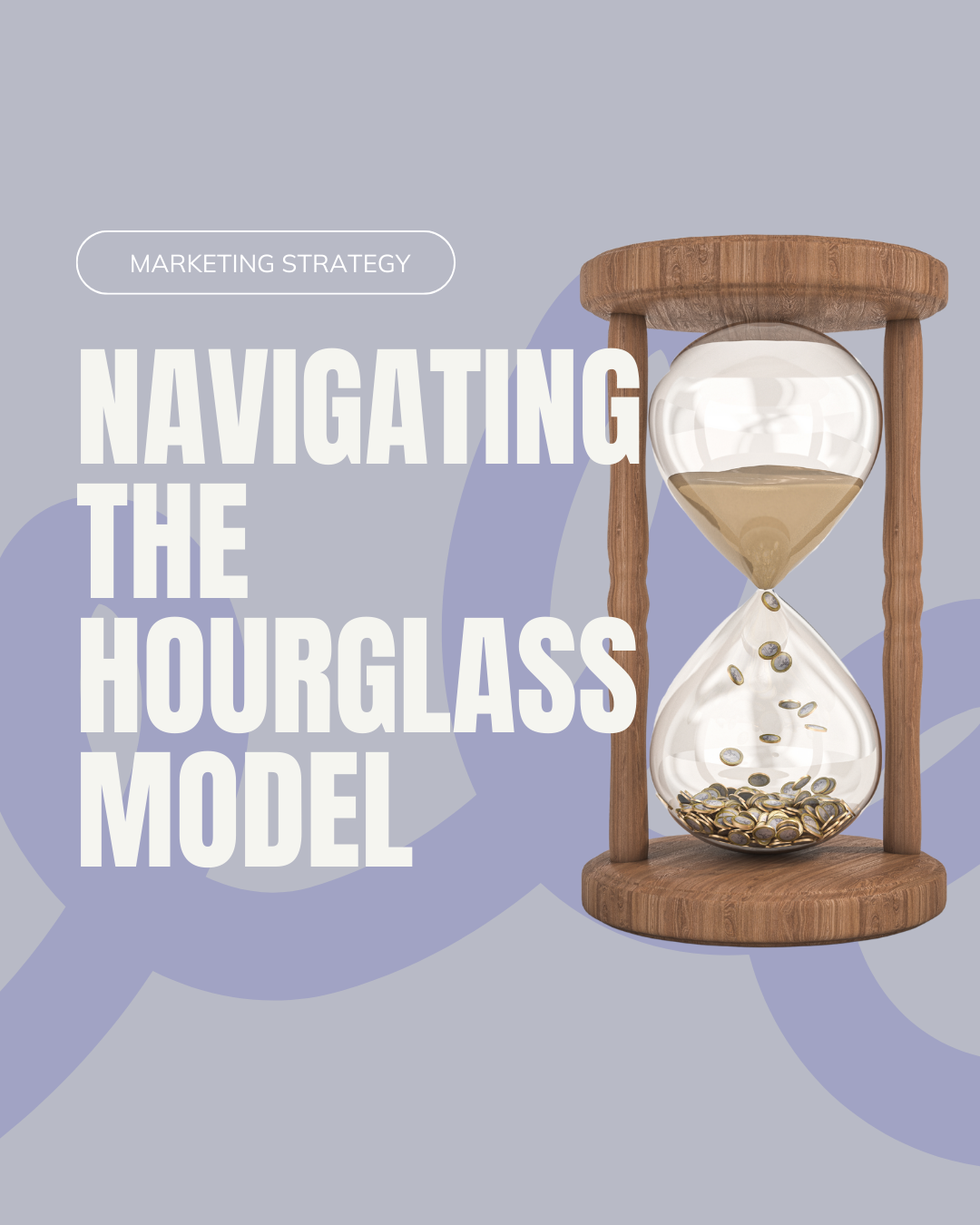
BE THE FIRST TO COMMENT: